Dmitri Shostakovich’s first opera was a setting of Nikolai Gogol’s 1836 story “The Nose.”
This scene is from the Royal Ballet & Opera’s 2016 staging.
(Thanks, Randy.)
Dmitri Shostakovich’s first opera was a setting of Nikolai Gogol’s 1836 story “The Nose.”
This scene is from the Royal Ballet & Opera’s 2016 staging.
(Thanks, Randy.)
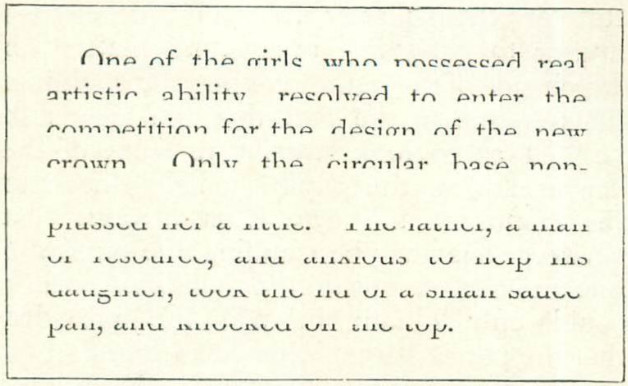
When we read type we imagine that we read the whole of the type — but that is not so; we only notice the upper half of each letter. You can easily prove this for yourself by covering up the upper half of the line with a sheet of paper (being careful to hold the paper exactly in the middle of the letters), and you will not, without great difficulty, decipher a single word. Now place the paper over the lower half of a line, and you can read it without the slightest difficulty.
— George Lindsay Johnson, “Some Curious Optical Illusions,” Strand, October 1897
11/04/2024 UPDATE: In the experimental writing system Aravrit, devised by typeface designer Liron Lavi Turkenich, the upper half of each letter is Arabic and the lower half is Hebrew:
(Thanks to reader Djed F Re.)

Every March since 2010, a white stork named Yaren has departed Africa, flown to the village of Eskikaraağaç in Turkey, and landed on the boat of fisherman Adem Yılmaz on the shore of Uluabat Lake. It spends six months in the village, fishing with Yılmaz every morning, then returns to Africa.
A statue of the two now stands in the village’s central square. A live broadcast of stork’s nest is here.
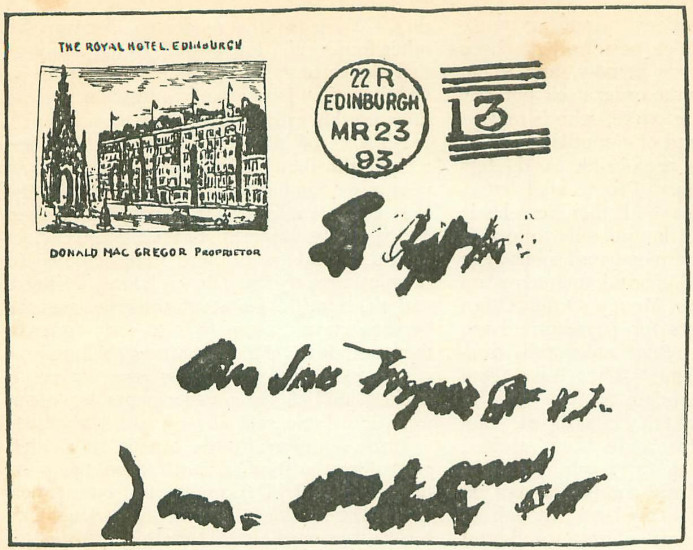
The British post office had to make sense of this address in 1893. It reads “The Right Hon. Sir James Fergusson, P.C., 25, Tedworth Square, S.W.”
Ironically Fergusson had been postmaster-general of Australia.
The writer was Thomas Denman, the future governor-general. The first page of the letter is below: “Dear Sir James, — I hardly think of coming before 11th to London. I am afraid I might …”
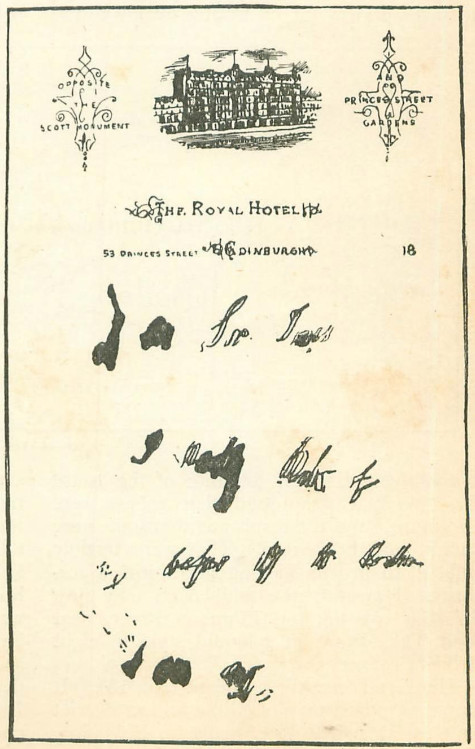
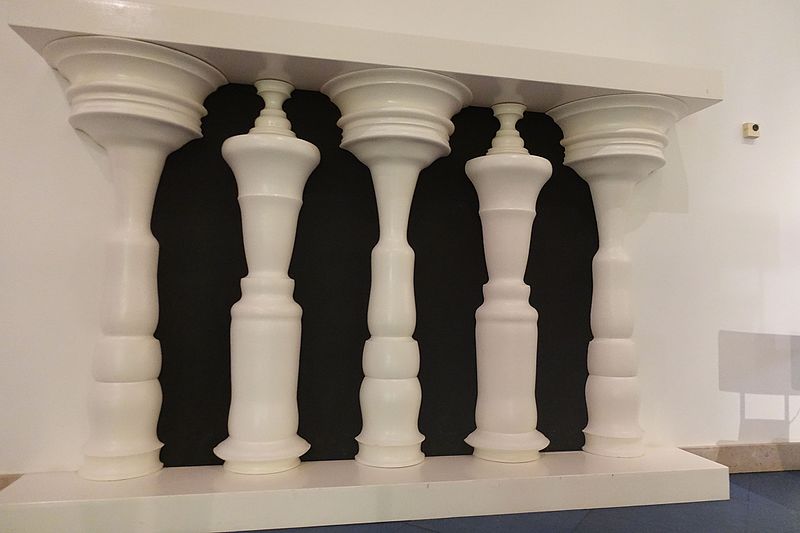
Lisbon’s Pavilhão do Conhecimento science museum has four more onlookers than are commonly recognized.
I don’t normally follow sports, but this seems worth remarking: Tonight Danny Jansen is set to become the first baseball player to play for both teams in the same game.
Jansen was in the lineup for the Toronto Blue Jays when they faced Boston on June 26, a game that was suspended because of rain and scheduled to be made up on Monday. In the meantime, he was traded to Boston, and Red Sox manager Alex Cora has said he will put Jansen in the lineup when the game resumes.
Jansen had been at bat when the game was suspended and will likely be behind the plate as catcher when the Blue Jays send a pinch hitter to finish the at-bat. So he’ll actually play both sides of the same at-bat.
Eric Money is the only NBA player to score for two teams in one game, though others have played for both sides.
(Via MetaFilter.)
Mark Twain approaches the international date line, 1895:
Sept. 8. To-morrow we shall be close to the center of the globe … And then we must drop out a day — lose a day out of our lives, a day never to be found again. We shall all die one day earlier than from the beginning of time we were foreordained to die. We shall be a day behindhand all through eternity. We shall always be saying to the other angels, ‘Fine day today,’ and they will be always retorting, ‘But it isn’t to-day, it’s tomorrow.’ We shall be in a state of confusion all the time and shall never know what true happiness is.
Next Day. Sure enough, it has happened. … While we were crossing the 180th meridian it was Sunday in the stern of the ship where my family were, and Tuesday in the bow where I was. They were there eating the half of a fresh apple on the 8th, and I was at the same time eating the other half of it on the 10th — and I could notice how stale it was, already.
That’s from Following the Equator. “[F]ortunately the ships do not all sail west, half of them sail east. So there is no real loss. These latter pick up all the discarded days and add them to the world’s stock again; and about as good as new, too; for of course the salt water preserves them.”

Sydney is 14 hours ahead of New York, so when it’s noon in Sydney it’s 10 p.m. the previous day in New York.
Suppose you were broadcasting to the U.S. on a news-service hook-up from Sydney, and wanted to tell the American public about an explosion that occurred at 2:30 A.M. in a factory in Sydney.
Would you say ‘There will be an explosion in the Sydney Boiler Works at 2:30 A.M. tomorrow morning?’
Or would you say ‘There was an explosion in the Sydney Boiler Works at 2:30 A.M. tomorrow morning?’
That’s from Gerald Lynton Kaufman’s It’s About Time, from 1935. For the record, the Associated Press would dateline the story SYDNEY and refer to clock times in that location.
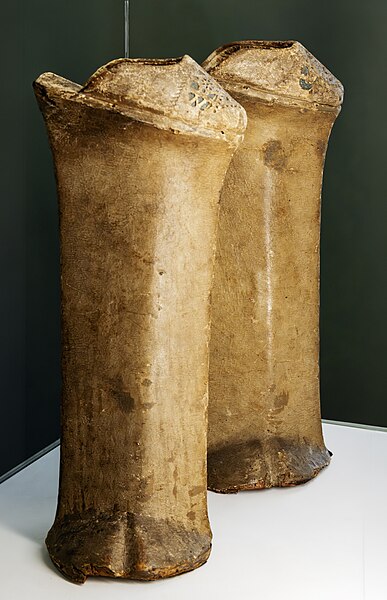
Venice’s Museo Correr exhibits a pair of wooden implements whose use isn’t immediately clear — they’re chopines, a type of platform shoe popular in the 15th, 16th, and 17th centuries. Worn under a woman’s skirt they could add up to 20 inches to her height, giving her an impressive eminence but an uncertain gait. Shakespeare mocked the trend in Hamlet’s greeting to a visiting player:
“By’r lady, your ladyship is nearer to heaven than when I saw you last, by the altitude of a chopine.”
08/15/2024 UPDATE: Reader Peter Kidd notes this even more impressive pair, now at the Museo Civico Medievale in Bologna:
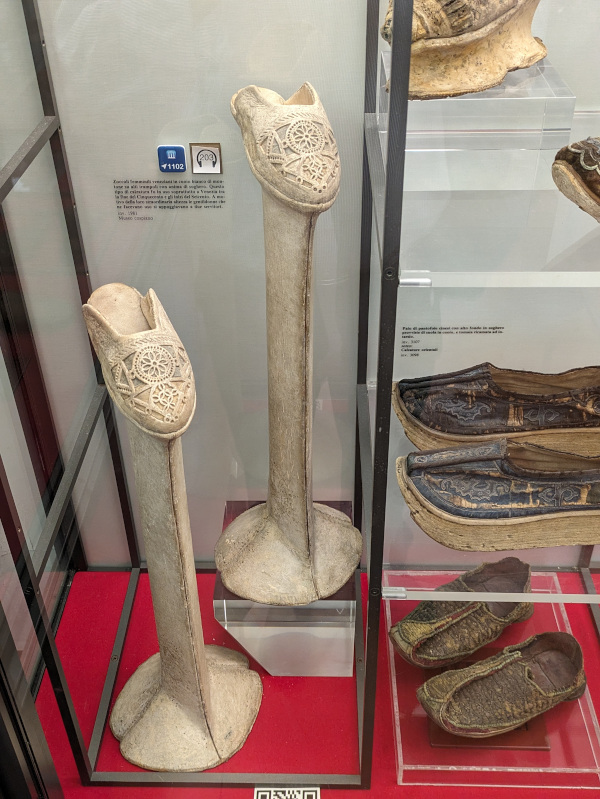
(Thanks, Peter.)
German scientist Gaspar Schott’s 1657 Magia universalis naturæ et artis includes a description of “the music of donkeys”: “the trick, according to Schott, lay in using male donkeys of particular natural pitches and stimulating them to bray with the urine of a female donkey, which will induce the males to make ‘most contented’ noises that the generous might construe as a kind of music.” Schott had argued that “the excessively discordant singing” of men and animals becomes sweeter when encountered rarely.
From Mark A. Waddell, Jesuit Science and the End of Nature’s Secrets, 2015.
Related: the cat organ and the piganino.